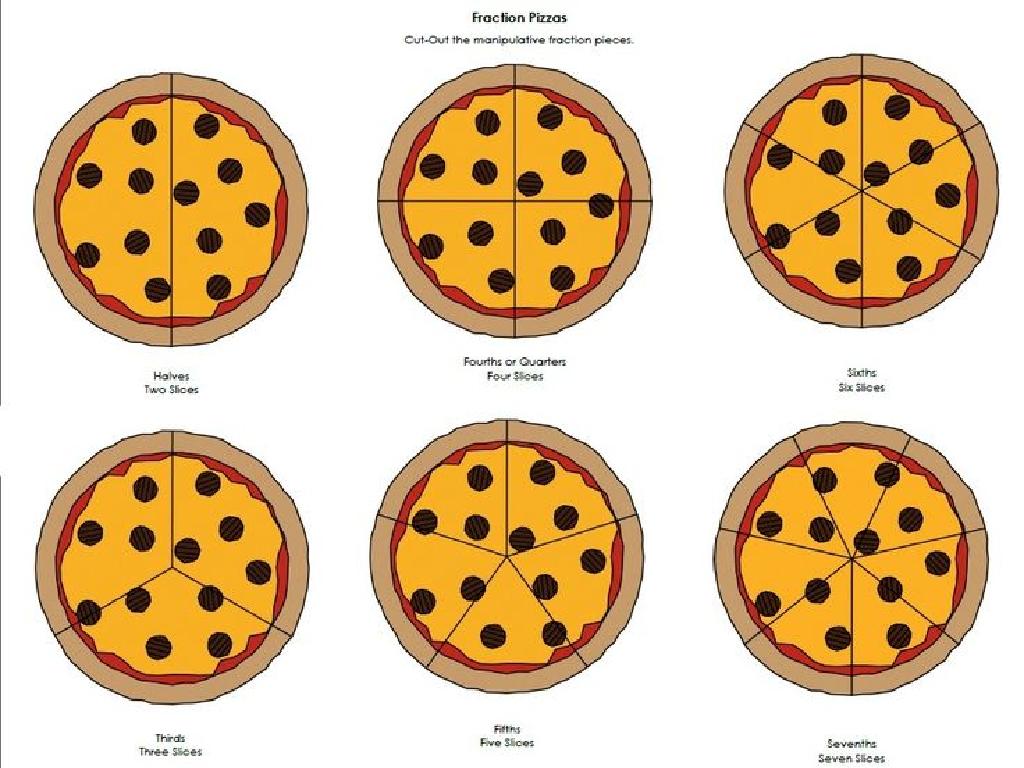Mechanisms Of Evolution
Subject: Science
Grade: High school
Topic: Biology
Please LOG IN to download the presentation. Access is available to registered users only.
View More Content
Introduction to Evolution: Biology’s Foundation
– Define evolution in biology
– Evolution is the change in heritable traits of biological populations over successive generations.
– Explore the evidence supporting evolution
– Fossils, genetic similarities, and observable changes support evolution.
– Discuss evolution’s significance
– Understanding evolution is crucial for grasping the diversity of life and adaptation.
– Analyze the impact on modern biology
– Evolution theory is pivotal in fields like medicine, ecology, and conservation.
|
This slide introduces the concept of evolution, which is fundamental to understanding all of biology. Evolution explains the diversity of life on Earth and how species adapt to their environments over time. It’s supported by extensive evidence from various scientific fields, including paleontology, genetics, and observational studies. Discussing the importance of evolution in biology helps students appreciate its role in explaining natural phenomena and its applications in modern science, such as understanding antibiotic resistance, the spread of diseases, and the development of new species. Encourage students to consider how evolution impacts their understanding of the natural world.
Charles Darwin and Natural Selection
– Charles Darwin’s contribution
– A naturalist who developed the theory of evolution by natural selection.
– The Beagle’s historic voyage
– Darwin’s 5-year journey on HMS Beagle, which influenced his ideas on evolution.
– Understanding Natural Selection
– A process where organisms better adapted to their environment tend to survive and produce more offspring.
– Key principles of the theory
– Variation, inheritance, high rate of population growth, and differential survival and reproduction.
|
Charles Darwin was a pivotal figure in biology, whose observations during the voyage of the HMS Beagle led to the formulation of the theory of natural selection. This theory posits that organisms with traits better suited to their environment are more likely to survive and reproduce, passing on those advantageous traits to the next generation. Key principles include the existence of variations among individuals in a population, the inheritance of traits, the potential for a population to increase rapidly, and the resulting competition for resources that leads to differential survival and reproduction. This slide will introduce students to the historical context and foundational concepts of Darwin’s theory, setting the stage for a deeper exploration of evolution.
Evidence of Evolution
– Fossil records as evidence
– Fossils show historical progression of life forms.
– Comparative anatomy insights
– Homologous structures indicate common ancestry, while analogous structures show similar functions.
– Genetic evidence from DNA
– DNA and protein comparisons reveal genetic similarities and differences among species.
– Observable changes in species
– Real-time observations of species adapting to environmental changes.
|
This slide aims to provide students with a comprehensive understanding of the various forms of evidence supporting the theory of evolution. Fossil records give us a chronological archive of past life forms, allowing us to trace the progression and branching of species over time. Comparative anatomy, including the study of homologous and analogous structures, helps us understand the relationships between different species and how similar traits can evolve. Genetic evidence is crucial as it provides a molecular level comparison that can show relationships not easily observed through physical traits alone. Lastly, we can witness evolution occurring in species that have short life cycles or in response to rapid environmental changes. Encourage students to think critically about how each type of evidence contributes to our understanding of evolution and to consider the implications of these findings on our perception of life on Earth.
Genetic Variation and Mutation in Evolution
– Sources of genetic variation
– Mutations, sexual reproduction, and gene flow contribute to genetic diversity.
– Mutation’s role in evolution
– Mutations are random changes in DNA that can lead to new traits.
– Recombination in genetics
– Recombination shuffles genes during sexual reproduction, creating diversity.
– Understanding gene flow
– Gene flow occurs when organisms move and mix genetic material across populations.
|
This slide aims to explain the mechanisms that introduce genetic variation, which is essential for evolution. Genetic variation is the raw material for evolution, and it arises from several sources, including mutations, which are random changes in the DNA sequence. These mutations can be beneficial, neutral, or harmful, and can lead to new traits that may be subject to natural selection. Recombination, which occurs during sexual reproduction, also contributes to genetic diversity by mixing the genes of two parents. Gene flow, the movement of genes between populations, can introduce new genetic material into a population, further contributing to variation. Understanding these concepts is crucial for students to grasp how evolution operates on a genetic level.
Types of Natural Selection
– Directional Selection
– Favors one extreme phenotype over the others
– Stabilizing Selection
– Favors the average phenotype, reducing extremes
– Disruptive Selection
– Favors multiple extreme phenotypes over the average
– Balancing Selection
– Maintains genetic diversity through balanced polymorphism
|
This slide introduces the four main types of natural selection, each playing a distinct role in the evolution of species. Directional selection occurs when environmental pressures favor one extreme of a trait, leading to a shift in the population’s phenotype over time. Stabilizing selection favors the average traits, reducing variation and extremes in a population. Disruptive selection, on the other hand, favors individuals at both extremes of a trait, which can lead to the formation of new species. Lastly, balancing selection maintains genetic diversity in a population by favoring more than one allele. Examples include the sickle cell trait in humans, which provides a survival advantage against malaria. Understanding these mechanisms is crucial for comprehending how species adapt to their environments and evolve over time.
Speciation and Extinction: Evolutionary Mechanisms
– Define Speciation
– Speciation is the process by which new species form.
– Allopatric vs. Sympatric
– Allopatric: species form due to physical separation. Sympatric: species form in the same geographic area.
– Extinction’s evolutionary role
– Extinction can shape the course of evolution by removing species.
– Speciation and Extinction balance
– The balance between speciation and extinction influences biodiversity.
|
This slide introduces students to the concepts of speciation and extinction, two critical mechanisms in the study of evolution. Speciation is the evolutionary process where new biological species arise. It can occur through allopatric speciation, where a species becomes physically separated (e.g., by a geographical barrier like a river or mountain range), leading to independent evolution. Sympatric speciation, on the other hand, occurs without physical separation, often through genetic mutations or behavioral changes within a population. Extinction plays a pivotal role by eliminating species, which can lead to adaptive radiation of other species to fill the ecological niches left behind. The dynamic balance between speciation and extinction is what shapes the diversity of life we see today. Encourage students to think about how these processes might be observed in the natural world and to consider the long-term impacts on biodiversity.
Evolutionary Patterns in Biology
– Understanding Adaptive Radiation
– When a single species evolves into multiple species to fill different niches.
– Convergent vs. Divergent Evolution
– Convergent: Unrelated species evolve similar traits. Divergent: Related species evolve different traits.
– Coevolution and the Arms Race
– Mutual evolutionary influence between two species, like predators and prey.
– Examples of Evolutionary Patterns
|
This slide aims to explain the various patterns through which evolution occurs. Adaptive radiation is a process where organisms diversify rapidly into a multitude of new forms, particularly when a change in the environment makes new resources available. Convergent evolution occurs when species not closely related independently evolve similar traits as a result of having to adapt to similar environments. Divergent evolution is the opposite, where related species evolve different traits. Coevolution is when two or more species reciprocally affect each other’s evolution, leading to an evolutionary arms race. Provide examples such as the finches on the Galapagos Islands for adaptive radiation, the wings of bats and birds for convergent evolution, Darwin’s finches for divergent evolution, and the relationship between flowering plants and their pollinators for coevolution.
Class Activity: Simulating Natural Selection
– Overview: Beak Variation Activity
– Objective: Link beak types to survival
– Materials: Tools as beaks, objects as food
– Procedure: Use ‘beaks’ to pick up ‘food’
– Observe which tools pick up the most ‘food’ items
|
This activity is designed to simulate natural selection through beak variation in birds. Students will use different tools (tweezers, spoons, clothespins, etc.) to represent different beak shapes and try to pick up various objects (seeds, marbles, rubber bands, etc.) that represent different food sources. The objective is to understand how certain beak shapes are more advantageous depending on the food source, thus affecting an organism’s survival and reproduction. After the activity, lead a discussion on how the results relate to natural selection, where the most effective ‘beaks’ represent those that would be naturally selected for in the environment. Provide detailed guidelines for the teacher to facilitate the activity, including ensuring safety and fair distribution of materials. Suggest variations of the activity for different student groups to explore, such as time limits, competition for food sources, or environmental changes.






